The American Association for the Advancement of Science (AAAS) has presented an award for Scientific Freedom and Responsibility annually since 1980. “It honors scientists, engineers or organizations whose exemplary actions have demonstrated scientific freedom and responsibility in challenging circumstances. “
These awards have gone on these past 38 years without much notice, recognizing worthy scientists and organizations for their service. For example, the 2018 award went to Marc Edwards, “a civil and environmental engineer whose team documented lead contamination in the water supply of Flint,” Michigan. This year is a little different…
The 2019 AAAS award winners are…
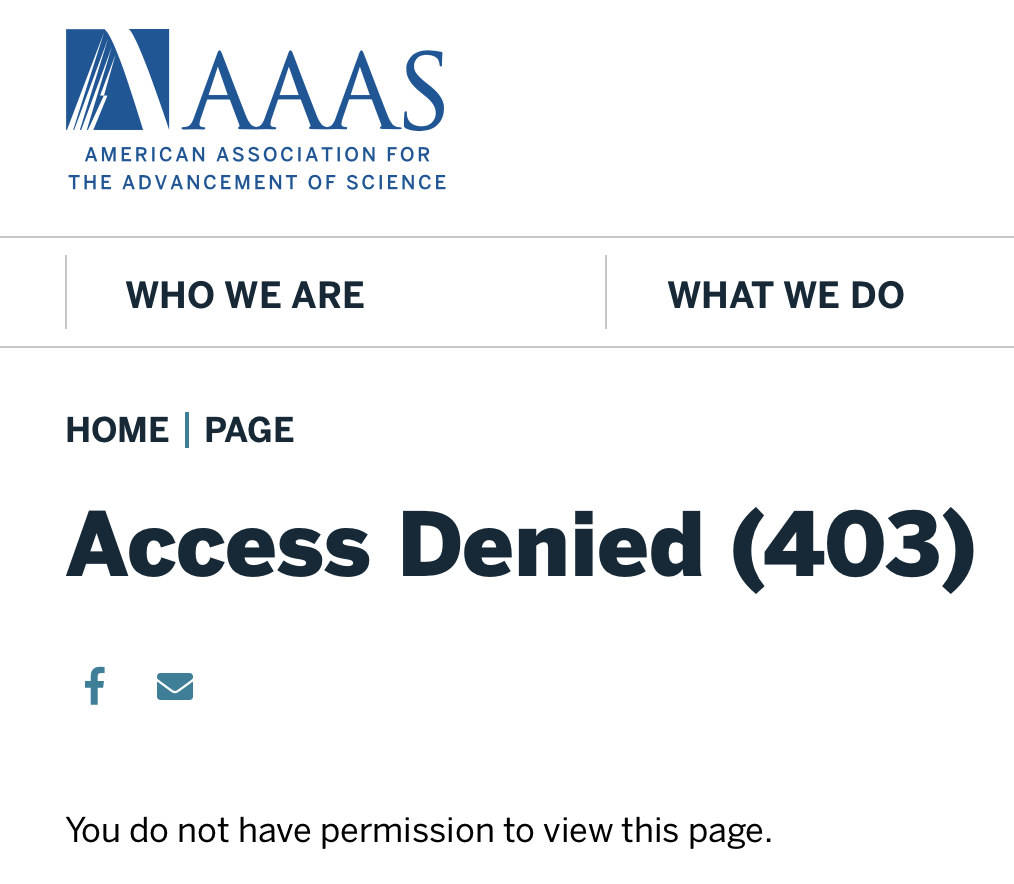
Global Fight Against Lethal Herbicides Earns 2019 AAAS Scientific Freedom and Responsibility Award was the title of this year’s award announcement. Lethal herbicide – that must be something really bad, right? What could it be? AAAS is referring to glyphosate, apparently.
This year’s award was so controversial that many scientists took to Twitter to express their displeasure. AAAS has revoked public view from the announcement page (though Biofortified saved a PDF) and AAAS announced on Twitter that they will not give the award as planned.
Like many others, I am curious about the circumstances of the nomination and award process, and what happened behind closed doors that resulted in this surprising retraction. In this post, I humbly suggest that AAAS has an opportunity here to improve not just one award or one committee but to reconsider how the organization can encourage different types of scientists to work together.
Who are the awardees?
The awardees, Sarath Gunatilake and Channa Jayasumana, published Glyphosate, Hard Water and Nephrotoxic Metals: Are They the Culprits Behind the Epidemic of Chronic Kidney Disease of Unknown Etiology in Sri Lanka? in 2014. This paper is specifically mentioned in the award announcement. They went on to publish Simultaneous exposure to multiple heavy metals and glyphosate may contribute to Sri Lankan agricultural nephropathy in 2015. Each paper had a different PI.
- Sarath Gunatilake, University of California, Long Beach – Mental health, international health, hospital management and quality assurance, training health care workers, disaster management, and occupational and environmental health research in international settings.
- Channa Jayasumana, Rajarata University of Sri Lanka – Causes and treatments for chronic kidney disease, nephrotoxins, epistemology, and traditional medicine systems.
- Priyantha Senanayake, Hela Suwaya Organization (lead researcher on the 2014 paper) – Additional research unknown, a full bio for this author was not found.
- Sisira Siribaddana, Rajarata University of Sri Lanka (lead researcher on the 2015 paper) – Tropical medicine, chronic kidney disease, snake bites, diabetes, complementary and alternative medicine, and bioethics.
Dr. Gunatilake has strong opinions about glyphosate. He “describes the deadly chemical as an octopus with poisonous tentacles reaching far and wide” as breathily reported in a Daily Mirror article, Glyphosate without adjuvants not very useful. Dr. Jayasumana also has some strong opinions, even testifying at the so-called “Monsanto Tribunal” that use of glyphosate has caused “ecocide”.
Dr. Senanayake is the founder of “Hela Healing“, which sells purportedly medicinal rice at many pharmacies and stores in Sri Lanka. In 2014, Dr. Senanayake was recognized by the first lady of Sri Lanka for her work on chronic kidney disease, as reported in Priyantha Senanayake awarded as a [heroine]. According to May God Natha help agriculture ministry!, she conducted “black magic” for the agriculture minister, was personally “issuing orders to ministry officials”, and was providing rice to the education services ministry when the article was published in 2015. According to Programme held at the Ministry to promote herbal drink, she was also to provide “porridge drink” to the ministry of defense, including their military and national guard. As she is clearly a person of great influence in Sri Lanka, it is unclear why Dr. Senanayake was not included on the award. Note that some meaning or context may have been added or lost when source articles were translated to English; any change in meaning from the original was not intentional on Biofortified’s part.
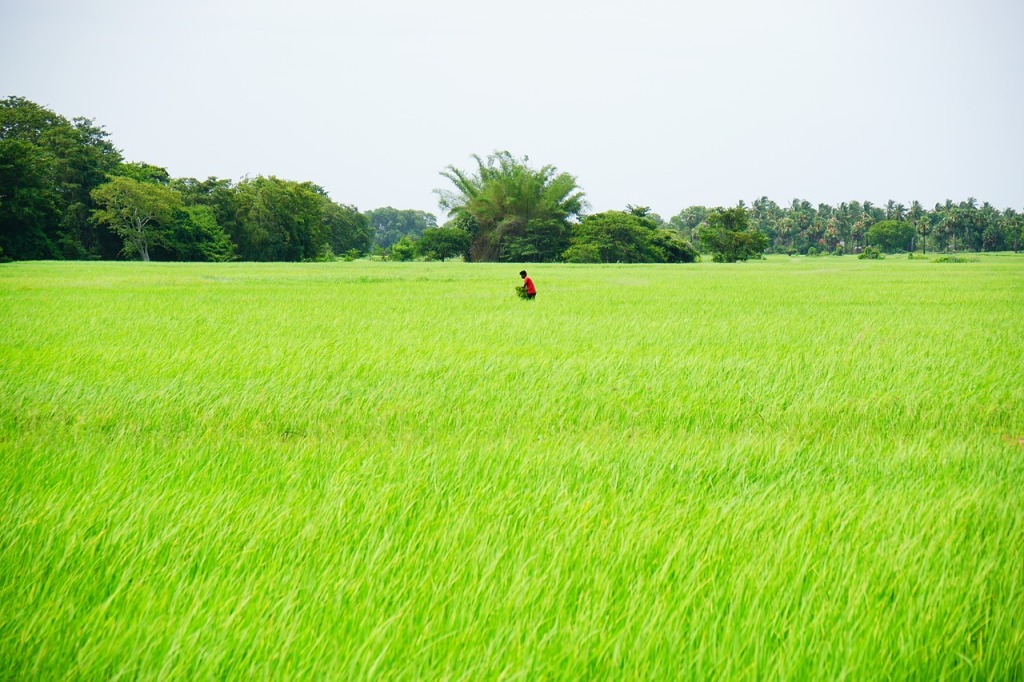
According to the AAAS press release about the award, the two researchers “faced death threats and claims of research misconduct while working to determine the cause of a kidney disease epidemic that has claimed tens of thousands of lives in their home country of Sri Lanka and around the world.” I was not able to find independent verification of such death threats, though I am searching only in English.
Clearly, these two public health researchers want to protect public health and according to the announcement they did face “challenging circumstances”. So in that sense, they are deserving of this award. Unfortunately, they did not exemplify scientific responsibility in the conclusions that they drew.
Before continuing, I want to be clear – I’m not necessarily saying that researchers with unusual results should not be honored for perseverance in the face of adversity. No one should face death threats, no matter their research claims. Researchers should be free to seek funding and to attempt to publish results, even when they go against the overall consensus on a subject.
Glyphosate is an easy target
Glyphosate is a surprisingly controversial herbicide. The controversy is surprising because of how benign it is. As the SciMoms explain, like GMOs, glyphosate has become a scapegoat or proxy for many socio-economic issues in food, agriculture, and beyond.
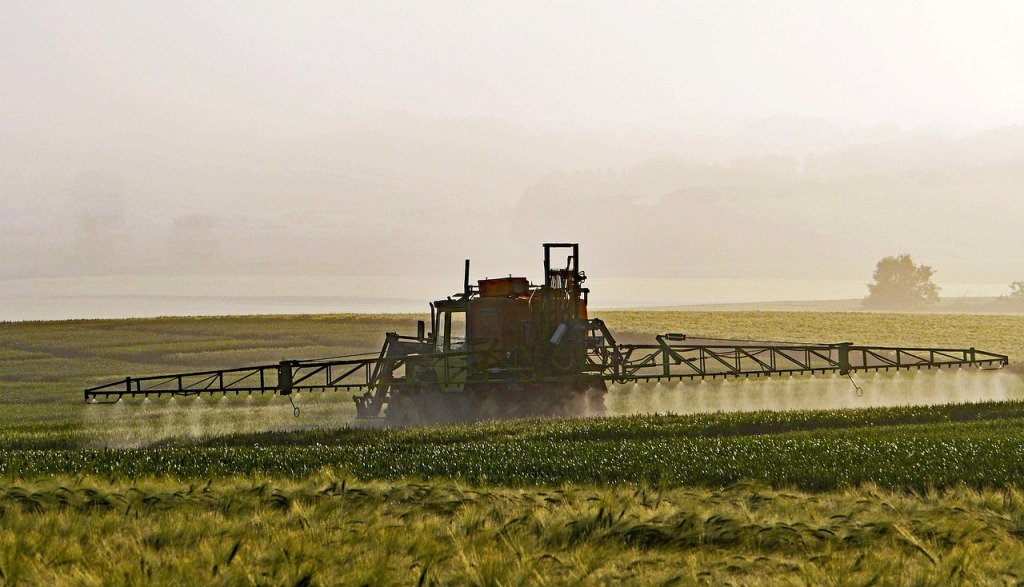
Iida Ruishalme has published an extensive series about glyphosate if you would like to get into specifics. Briefly, animals, including humans, do not have the metabolic pathway affected by glyphosate. Dietary exposure of glyphosate is low. Even among the most exposed populations, glyphosate does not cause cancer. There has been limited evidence that glyphosate could be an endocrine disrupter, but it was not identified by an endocrine disrupting chemical by the US Environmental Protection Agency in their Tier 1 Screening Results and Tier 1 Assays: “there was no convincing evidence of potential interaction with the estrogen, androgen or thyroid pathways.”
Use of glyphosate has increased over time. In Long-term trends in the intensity and relative toxicity of herbicide use, Andrew Kniss showed that in the United States, “glyphosate accounted for 26% of maize, 43% of soybean and 45% of cotton herbicide applications” in 2014/2015. But, because of glyphosate’s low toxicity relative to other herbicides, it only contributed a small percentage of the chronic toxicity hazard in these crops.
Because of its prevalent use globally, glyphosate is an easy target. But in some ways, further replacement of other herbicides with glyphosate would further reduce overall risk.
Chronic kidney disease and the glyphosate ban
In Glyphosate, Hard Water and Nephrotoxic Metals: Are They the Culprits Behind the Epidemic of Chronic Kidney Disease of Unknown Etiology in Sri Lanka? the awardees reported that the disease had plagued rice paddy farming areas in Sri Lanka since the mid-1990s. The researchers hypothesized that glyphosate was the “Compound X” that binds to metals and carries them to kidneys to cause damage.
If only chronic kidney disease of unknown etiology (CKDu) could be stopped by just removing glyphosate. But this hypothesis didn’t pan out in 2014, or today. Three recent reviews and meta-analyses tell us the full story.
CKDu currently occurs among agricultural workers in 5 areas of the world: North Central Province in Sri Lanka, Andhra Pradesh in India, Tunisia, El Minya in Egypt, and parts of El Salvador and Nicaragua. CKDu presents differently in each area and seems to be associated with different factors in each area as well, according to a 2017 review Endemic Nephropathy Around the World.
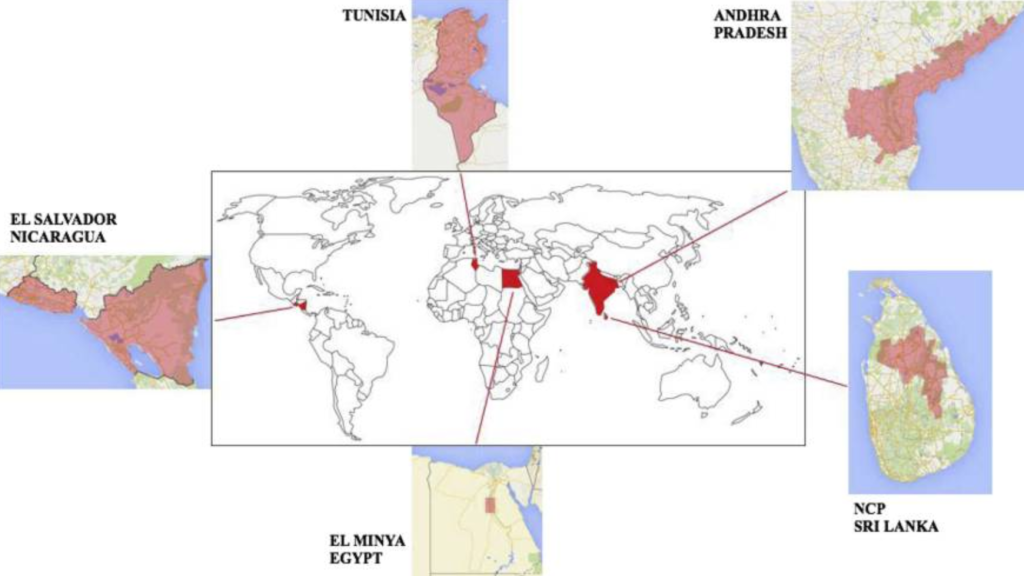
The reviewers also describe 2 previous unexplained chronic kidney disease epidemics with similar symptoms but that pre-date glyphosate. Itai-Itai disease in Japan, first identified in the 1910s, was found to be due to cadmium-contaminated crops. Balkan endemic nephropathy, first identified in the 1950s, was found to be due to accidentally consuming seeds from a toxic herb. Subsequent cases have been identified when people intentionally take certain toxic herbs as herbal remedies.
What do epidemiological studies tell us about chronic kidney disease of undetermined cause in Meso-America? A systematic review and meta-analysis, from 2017, concludes: “Our meta-analysis showed positive associations for males (versus females) and family history of CKD, water intake, lowland altitude and CKDu. There were no significant associations with pesticide exposure, non-steroidal anti-inflammatory drugs intake, heat stress and alcohol consumption.”
Pesticide exposures and chronic kidney disease of unknown etiology: an epidemiologic review, also from 2017, “performed a systematic review of epidemiologic studies that addressed associations between any indicator of pesticide exposure and any outcome measure of CKD.” They confirm that “existing studies provide scarce evidence for an association between pesticides and regional CKDu epidemics.” They suggest that more studies should be done.
Despite the lack of evidence for the hypothesis that glyphosate causes CKDu, Sri Lanka banned glyphosate in 2014, apparently in large part due to the work of the awardees. In 2015, the National Academy of Sciences of Sri Lanka issued a Statement on the Banning of Glyphosate, suggesting that the evidence points to the need for clean water and medical care for people in the affected area, education about safe use of pesticides, and controls on the importation of sub-standard pesticides – all evidence-based measures. When we blame the wrong things for public health problems, people continue to get hurt.
https://twitter.com/jetpack/status/1092850089612267552The glyphosate ban decreased yields, increased erosion, and may have increased illegal use of pesticides, according to Ban on Glyphosate: Planters’ plea for an alternative. These problems are described again in Glyphosate ban must be lifted and many other articles. The ban was finally lifted in 2018. With this award emboldening anti-glyphosate activists, are we more or less likely to see evidence-based solutions now?
AAAS Award for Scientific Freedom and Responsibility
At this time, we have little information about exactly what happened with this award. But we do know how the selection process works, according to AAAS:
Nominations should be sent via postal mail or email… All nominations are reviewed by a selection committee, which consists of five members chosen for diversity of background and sensitivity to the activities honored by this award. The committee’s selection must be endorsed by the AAAS Board of Directors at their fall meeting.
AAAS Award for Scientific Freedom and Responsibility
Nomination
The first step is nomination, which begs the question of who submitted the nomination packet. It is entirely reasonable to imagine that some well-written letters extolling the virtue of supposedly ground-breaking research would sound very compelling to award committee members who are entirely unfamiliar with the field. Add information about persecution and death threats for their science and the story is still more compelling.
Selection
Given that this is the Award for Scientific Freedom and Responsibility, you’d think the awardees are likely chosen by members of the Committee on Scientific Freedom and Responsibility (CSFR) or a committee they selected. This 15-person committee currently has 2 members with expertise in the biological sciences; they are both medical doctors. None have a background related to agriculture or pesticides. That said, they have an incredible diversity of research and expertise.
However, as CSFR member Matthew Brown describes, the Committee on Scientific Freedom and Responsibility does not have this task. Instead, the AAAS Scientific Responsibility, Human Rights & Law Program (SRHRL) convenes the selection committee. SRHRL is run by a program staff of 5, including an assistant. None have a background related to agriculture or pesticides, or even biology or chemistry. Would they have chosen anyone with a background in these for the selection committee?
Due to their backgrounds, the program staff may have been unaware of or unable to see the controversy around glyphosate as it might have been presented in a nomination letter. But at least some of them should have been able to do a quick literature search for causes of CKDu (as I did for this post) and find that the researchers’ hypothesis was weak at best. If not able to do this themselves, they could have found some scientists who could evaluate the claims and research the background a bit before deciding upon an awardee.
Endorsement
Per the terms of the award, the AAAS Board of Directors endorsed the selection. The Board of 5 includes 2 biological scientists, both in medicine. These eminent leaders of science presumably reviewed the selection and decided it was an appropriate award. Like the program staff, the AAAS Board may have been unaware of the controversy around glyphosate. But again, they should be able to search the literature for confirmation of the nominees’ claims.
Promotion
As weed scientist Andrew Kniss pointed out on Twitter, there were many concerning phrases in AAAS’s announcement.
https://twitter.com/jetpack/status/1092837680428269569
This wording is much stronger than warranted, when we consider both the paper being recognized and all of the other available research on glyphosate. I suspect this language came directly from the nomination packet.
The announcement for the award was written by a science writer from the AAAS Newsroom. Like the Committee and the AAAS Board, the writer may have been unaware of the controversy around glyphosate, but he could have searched for more information.
Disheartening disinformation
Altogether, this seems to have been a systemic lack of information-seeking and some confirmation bias, combined with as-yet unknown motivated nomination letter writers. While some on Twitter cried foul, I don’t see evidence that this was anything nefarious by AAAS. This award situation is new, but it’s part of an all too familiar narrative.
Writing about the glyphosate ban in Sri Lanka, Buddhi Marambe, weed scientist of the University of Peradeniya in Sri Lanka summarizes:
We have failed to look at issues taking the totality into consideration. The complex problems in agriculture have no single and simple answers, especially with regard to national level food security. Forces with political and spiritual ideologies have always succeeded in the recent past in over-ruling even the most basic scientific principles. This is a pathetic story.
The glyphosate story – CKDu, food security and national economy
I feel his frustration. It often seems that despite all of our hard work, the needle has barely moved. Fear of biotechnology is higher than ever. Vaccination rates are declining. New plant breeding technologies are set to be stringently regulated. Netflix is funding a docuseries to promote discredited cures. It’s never ending. And it is pathetic.
Doing something different
The best way to ensure that everything from small awards to large grants to policy decisions and more are based on both social and scientific merit is to have different views represented at the table. In short, biologists, chemists, and more need to volunteer and be present where all of these things are discussed and decisions are made. When we do, we need to be open to listening to everyone, and work toward understanding the ethicists and sociologists. Working towards mutual understanding helps everyone.
This isn’t just about the 2019 AAAS Scientific Freedom and Responsibility Award. The award is just another indicator for old, deep problems. The silos of “hard science” and “soft science” hurt all of science and all of society. Those working on technological applications often aren’t considering the societal implications of their work while those who are considering the societal implications might not have enough in-depth experience with the tech itself.
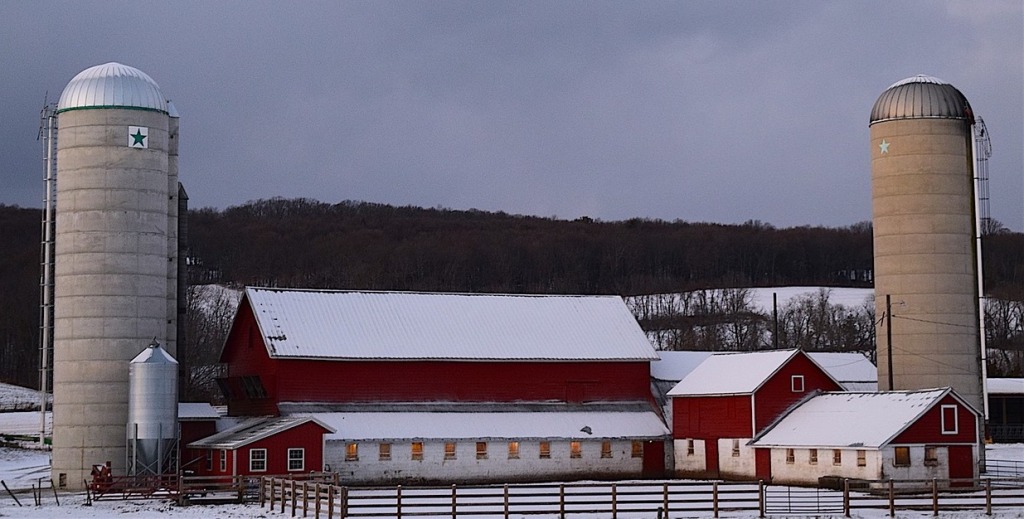
Unfortunately, researchers in the “hard sciences” often don’t volunteer for work in the “soft sciences”. Why would they? While we give lipservice to other things, the currency of academia is publications – not mentoring, not outreach, certainly not serving on award committees. Yet if there had been just one agronomist on this committee, the nomination could have been flagged.
There does seem to be a growing number of cross-trained scientists, which is encouraging – but anecdotally, we’re also finding trouble fitting into traditional careers that don’t reward “extracurricular” activities when we’re in research roles, yet we’re too experienced and too educated for many other roles.
This is where AAAS comes in. Instead of sweeping this award situation under the rug, how amazing would it be if they found ways to encourage silo breaking? If anyone has the power to advocate for new incentives for interdisciplinary work, it’s the world’s largest interdisciplinary scientific society. Ideas have already been developed, such as those presented in the 2018 paper Overcoming early career barriers to interdisciplinary climate change research.
AAAS organizes members into Sections based on field. According to the incoming chair for Agriculture, Food, and Renewable Resources, ag scientists are very rare in AAAS. AAAS might not currently count many scientists with agricultural expertise among its members, but to me, that’s an opportunity disguised as a challenge.
It would be easy enough to determine which Sections are under-represented. For example, according to the Bureau of Labor Statistics Occupational Outlook Handbook, in 2016 there were 19,900 physicist and astronomer jobs, growing at a rate of 14%, while there were 43,000 agricultural and food scientist jobs, growing at a rate of 7%. AAAS could look at the current membership and provide incentives such as discounted membership and discounted meeting attendance to under-represented fields. Membership of $125 per year might not seem like much but it adds up when you consider various domain-specific societies that we must also belong to. AAAS could also encourage institutions to permit researchers to use grant funds to pay for membership, something that is not universally allowed.
On a related note, science communication is another area where AAAS could demonstrate leadership on the policy side. AAAS provides top-notch science communication training and events, and and they even have a Communication Toolkit on their website. The organization clearly sees value in scientists communicating with the public. But getting scientists excited about outreach doesn’t help much when there’s little to no reward for doing it. Changing performance evaluations to include outreach would show that this activity has value – and AAAS is one organization that could provide leadership and encourage institutional change.
AAAS has shown incredible leadership on many topics over the years, including taking major steps against harassment, advocating for human rights, training scientist diplomats, and much more. In that context, developing and implementing incentives for interdisciplinary involvement both inside and outside AAAS itself and helping those who are cross-trained to find roles that use their skills seems almost easy. Then next time there’s a questionable award nomination, it will be dealt with easily.
Editor’s note: Thanks to our commenters for providing needed information! Updated February 11, 2019 to add information about Priyantha Senanayake, and to elaborate on what AAAS could do differently to reduce such missteps in the future. Updated February, 14 2019 to correct how the selection committee is chosen, and to add a note about what AAAS could do to encourage scientists in science communication.
The woman quoted in the vanished news article–Jessica Wyndham*–appears to be a proponent of all these good things (based on a recent tweet):
“Are you an expert in #ResearchMisconduct, #ResearchIntegrity, #ethics and the social responsibilities of scientists? Join the staff @AAAS and help define & implement a vision for our work in this crucial field.”
So I think that we can expect transparency and integrity from this. That will be really refreshing. Right now, it’s just run amok with conspiracy theories. So she can really help us to understand what happened and what to do to fix it.
*director of the Scientific Responsibility, Human Rights and Law Program at AAAS
LikeLike
Here’s hoping!
I went through each of the committee members and (briefly) looked at their expertise and publications. I didn’t see anything that indicated the sort of activism that the awardees themselves conducted, no scurrilous claims about agriculture or things like that.
Transparency from the organization is ideal but I do think this was just a case of accepting what was on the nomination letter. At minimum, I don’t think they will do that again!
LikeLike
Personally I accept the science that GMOs are likely safe. As far as Glyphosate I have no idea.
But..Do you think at least part of the problem is Monsanto’s own behavior? I mean things like this-
Chhabria on Monday said plaintiffs could introduce some evidence of Monsanto’s alleged attempts to ghostwrite studies and influence the findings of scientists and regulators during the first phase of upcoming trials. He said documents which showed the company taking a position on the science or a study introduced during the first phase were “super relevant.”
https://www.insurancejournal.com/news/national/2019/01/29/516019.htm
LikeLike
AlwaysWondering, I do think part of the problem was Monsanto’s behavior. Glyphosate would always have been maligned in some way because of its association with GMOs. But the behind the scenes shadiness makes the herbicide seem far worse than is warranted, based on the scientific evidence.
If this had been some other pesticide that doesn’t have the Monsanto connection, would the awards committee have been more skeptical? We may never know for sure but I suspect the answer is yes.
LikeLike
While researching the issue of CKDu for an article, I found at least 150 scientific research articles exploring nearly as many causes for the disease(s). Thus, the proposed AAAS prize winners are in good company in their search for answers. CKDu literally means “Chronic kidney disease of unknown etiology”. There is nothing to suggest that anyone as yet has solved the medical puzzle which is CKDu, and according to (among others) prof. Ravindra Fernando, Head of the Departement of Forensic Medicine and Toxicology of the University of Colombo, Sri Lanka, glyphosate can not tbe he cause of CKDu.
LikeLike
Liv, I was quite tempted to list all of the possible factors that could contribute to CKDu but that would make for a long post indeed! I was thankful for these 3 fairly recent reviews that covered many (but not all!) of the options.
LikeLike
The authors of the paper “Glyphosate, Hard Water and Nephrotoxic Metals: Are They the Culprits Behind the Epidemic of Chronic Kidney Disease of Unknown Etiology in Sri Lanka?” included one more person, Priyantha Senanayake who was curiously not considered for the award. Readers might like to know that she is a seance who claims to be able to communicate with the God Natha and before 2012 conveyed his view that Arsenic and Mercury in water caused Kidney Disease encouraging Jayasumana to claim that he had experimental results to prove it. The Glyphosate alternative probably came from the seance when the theory lost favour, but in going for Glyphosate the authors came into the limelight fuelled by the support of the international Monsanto brigade. Needless to say, it still remains a hypothesis with no real evidence in support.
LikeLike
Have you found any news articles or other documents that describe this? I searched for any unusual claims associated with the third author but I didn’t find anything.
LikeLike
Ok, the seance thing is strange enough. I don’t have any idea if that’s the case. But here’s another question now: why wasn’t the woman in the award? If she’s part of the same work, why would she be left off?
LikeLike
Um, I did find this, though. http://www.vivalanka.com/newspage/622205ai-priyantha-senanayake-awarded-heroin
LikeLike
Oh Vijaya you have caught an error in my article here – I saw the 3 authors on the second paper (Channa Jayasumana, Sarath Gunatilake and Sisira Siribaddana) and I didn’t go back and check that it was the same three authors on the first paper. It had a different PI – Priyantha Senanayake. I’ll go back and correct that now. And I’ll double check for any unusual claims!
LikeLike
I did my best to report on Dr. Senanayake fairly, though I had to use Google Translate on her Hela Suwaya website and many of the source articles had clearly already been translated or written by a non-native English speaker (i.e. heroin instead of heroine). If anyone has clarifications or additional sources about this author or other topics in this article, please let me know in the comments. Thanks!
LikeLike
The scientific explanation for the chronic kidney disease in Sri Lanka has been published in Nature reports where experiments on laborator mouse are presented,
and in the Journal of Environmental Geochemistry & Health, and a variety of other journals.
See:: Nature-scientific reports 2017 doi: 10.1038/srep42516
Environ Geochem Health, vol. 40, p 705-718, (2017), https://doi.org/10.1007/s10653-017-0017-4
See also: Ceylon Medical Journal year 2017: doi: 10.4038/cmj.v62i1.8428
The conclusion seems to be that the use of stagnant household well water containing fluoride, and other salts cause kidney damage by a synergistic mechanism.
LikeLike
I would like to note that it is not true that the awardees are chosen by members of the Committee on Scientific Freedom and Responsibility or a committee we selected. The award committee is convened by the staff of the AAAS Scientific Responsibility, Human Rights & Law Program, separately from CSFR. Not being privy to the process, I have no comment at this time about the 2018 or 2019 awardees. I just wanted to correct the record on that point.
LikeLike
Thanks, Matthew, that is good to know and I will update accordingly. It is quite confusing that the “AAAS Award for Scientific Freedom and Responsibility” would not be selected in any way by the “AAAS Committee on Scientific Freedom and Responsibility” (which has a good amount of transparency as to its duties and its members who are AAAS members) and instead by the “AAAS Scientific Responsibility, Human Rights & Law Program” (which seems to be made up of AAAS staff only).
LikeLike